ESSENCE 2
Meanings of expression
of Kenbu
Meanings of expression of Kenbu
One of the most famous kenbu programs is “Fushikiankizan wo utsu no zu ni daisu.” This classical Chinese-style poem by Rai Sanyo, a samurai and master of Chinese poetry in the late Edo period, illustrates the rivalry between Uesugi Kenshin and Takeda Shingen in the sengoku era of civil wars, from Uesugi Kenshin’s point of view. It is also well-known under the popular name “Kawanakajima.” The piece thus provides some advance information on the battles of Kawanakajima, and some preliminary research on the meanings of classical Chinese poems can also help understand what is happening on the stage. Below are some points to keep in mind for an enhanced enjoyment of a kenbu performance.

1 Conduct preliminary research on poetry
Whenever you are invited to a recital, contact the organizer and ask for a program or a list of featured poems. As soon as you know what poems will be featured, you can do some research on the Internet, and you may be able to read the poems beforehand. Pre-liminary knowledge of their authors, contents and historical backgrounds help understand the meaning of the choreography of each performance.
2 Gain knowledge of means of expression
The choreography of a kenbu performance is usually limited to the originator, patriarch or head of the respective school, or other person with special permission. The choreography of a certain Chinese poem is generally carried out by combining several patterns (while sometimes inventing new ones). Patterns can be roughly divided into the three categories described below. The more patterns for expressing certain things you know, the better you will understand the choreography of the piece you are watching.
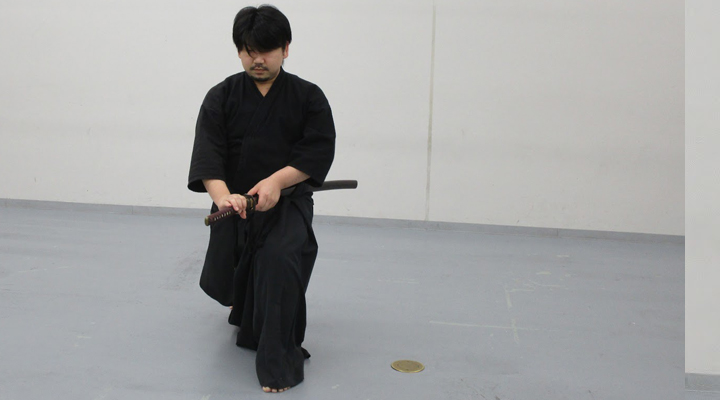
2-1 Sword action expressing a fight
Fighting scenes are expressed through continuous sword strokes. Even though swords were not necessarily used in each and every reallife fight, here the sword is used as a symbol for samurai. Many of the rules for the use of the sword, such as sheathing, unsheathing or striking, are based on the techniques of iaido, which hints at the fact that kenbu is a performing art that developed out of martial arts. Nonetheless, it does stress the showiness of performing arts, and even through some patterns have the same names, the postures in kenbu are sometimes quite different from those in martial arts. For those proficient in martial arts, it may be interesting to try and spot the differences.
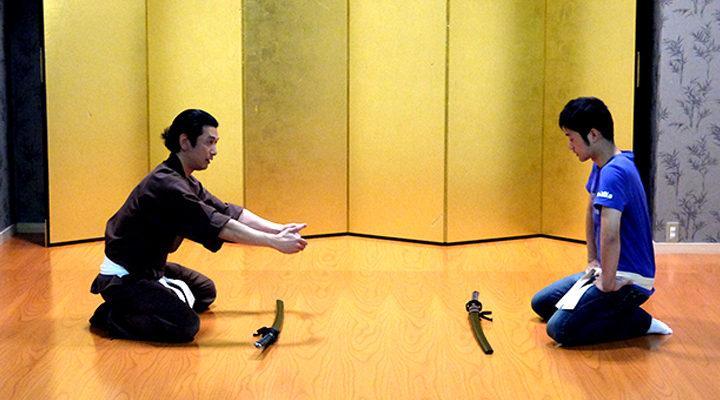
2-2 Psychological descriptions of human characters, and manners of using swords and fans
Choreographies incorporating the use of swords don’t only focus on stroke patterns, but they also contain such actions as preparing a sword prior to a fight, or raising the sword in front of the body to express a state of elation. There are also scenes in which actual postures with sword and fan are part of the choreography, such as performers placing their sword to their right and their fan in front of them, and bowing to their lord while seated.
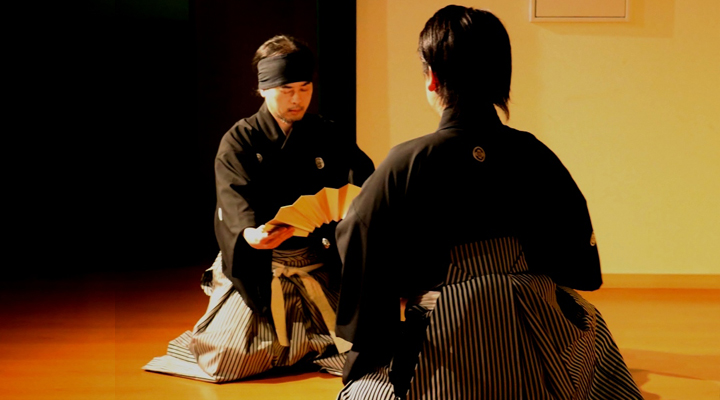
2-3 Expressions of manners and customs through “mitate”
The style of using a sword or a fan to resemble something else is known as mitate. A sword can be used to resemble a cane, a bow or a gun, while a fan can be used for expressing a wide range of things and feelings, including plants, rain and wind, mountains, waves, liquor, a door, a helmet, armor, spraying blood, a bow or a cane. In some cases, the fan is replaced with a real flag, drinking glass or cane, but it is generally possible to express all these things with a sword or a fan.
Moving on stage

hakobi-ashi
Many forms of Japanese-style dance are basically performed in a shuffling suriashi syle and a half-sitting posture. When moving across the stage in the suriashi style, we speak of “hakobu” (lit. “to carry” or “to proceed”) rather than “aruku” (to walk). For the suriashi style, the performer strains the muscles around the waist and belly in order to proceed in a sliding manner without moving the body up and down, and without showing much of the soles of his/her feet. Mastering the suriashi style requires many years of training.
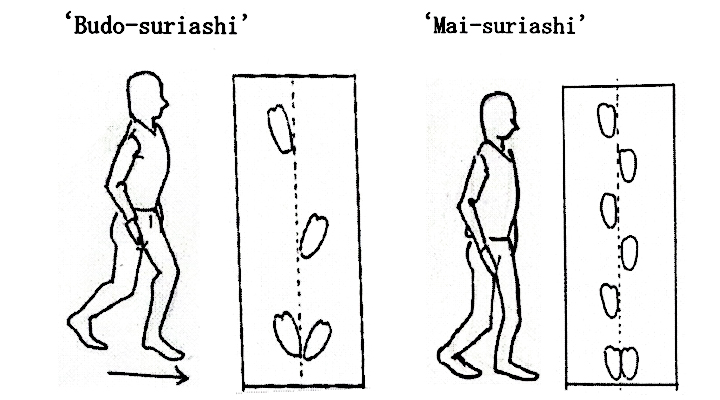
1 Kenbu-suriashi (or Budo-suriashi) and Mai-suriashi
Budo-suriashi is a firm, martial arts style of suriashi during which the waist is even lower than usual, and the body leaning even further forward. For the mai-suriashi the feet stay closer together than in the budo-suriashi, and the overall posture is largely upright with the knees bent only slightly. The result is a very pliant, dance-like motion.
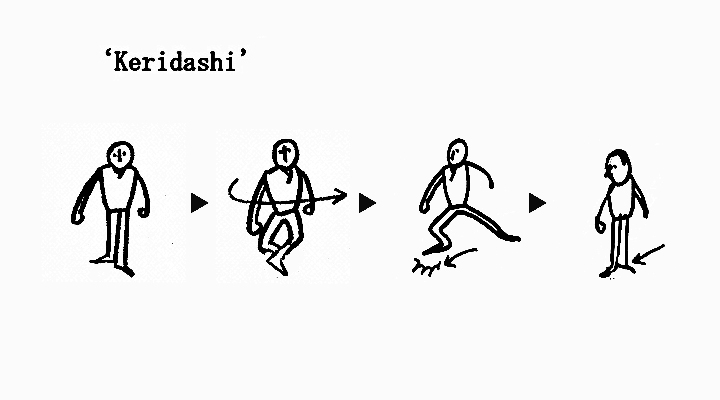
2 Keridashi ( or Fumidashi/Itawari )
Keridashi is one of the most characteristic movements in kenbu. The performer stamps his/her feet so hard that they make a big noise and almost crack the floorboards. This is an effective way to express power through dance.
